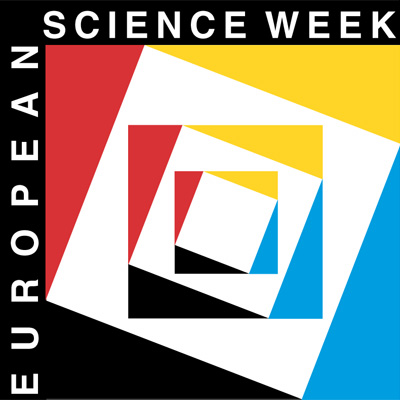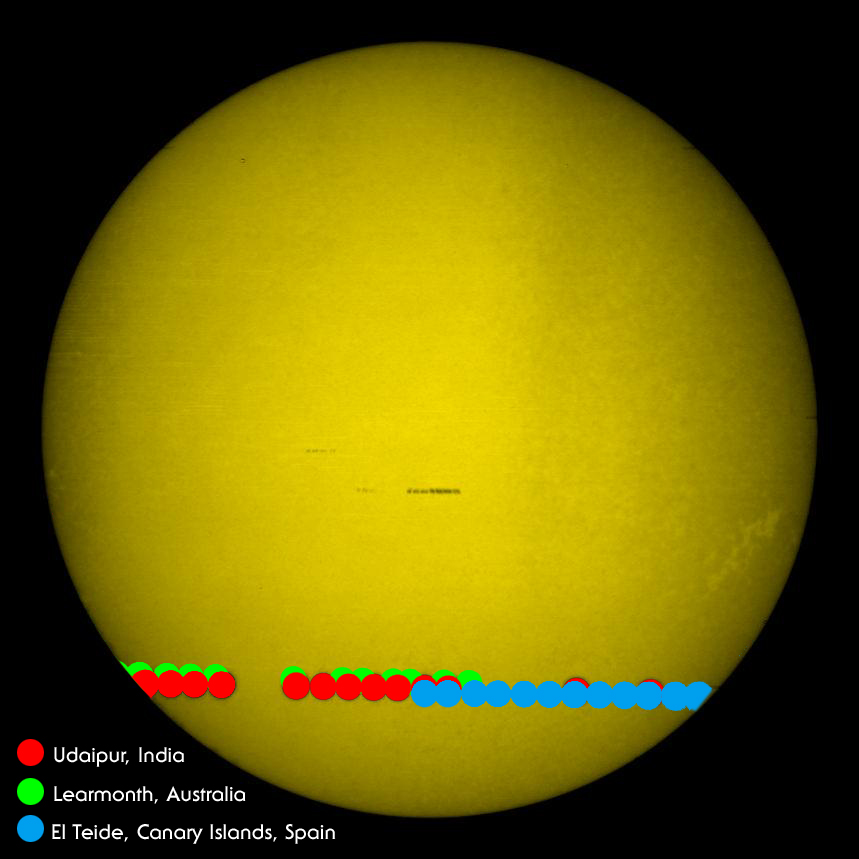

The Venus Transit 2004
... The VT-2004 Photo Archive
More than 600 photos from observers have been included in the VT-2004 Photo Archive . They range from observations of Venus before and after the transit on June 8, 2004, to numerous images of Venus in front of the solar disk on that day and also solar phenomena. Some were obtained with rather simple equipment, others with professional instruments. Some images are "raw", i.e. as they were recorded by the camera, others have been processed by advanced software.
Some of these photos were elected "VT 2004 Photo of the Day" (April 17 - August 8, 2004).
The VT-2004 Photo Archive consists of two parts: one shows the photos more or less in the order they were received - in another, they have been arranged according to eight themes.
The VT-2004 organisers would like to thank all photographers who have contributed to this unique collection of images!
All photos in the VT-2004 Archive may be downloaded and used, provided the photographers (authors) and the VT-2004 programme are indicated as source.
Note also the collection of photos from public events in many different countries.
In Chronological Order | |
| Click on a page (10 photos on each): [1] [2] [3] [4] [5] [6] [7] [8] [9] [10] [11] [12] [13] [14] [15] [16] [17] [18] [19] [20] [21] [22] [23] [24] [25] [26] [27] [28] [29] [30] [31] [32] [33] [34] [35] [36] [37] [38] [39] [40] [41] [42] [43] [44] [45] [46] [47] [48] [49] [50] [51] [52] [53] [54] [55] [56] [57] [58] [59] [60] [61] | |
By Theme | |
| Intervening Objects - Venus Occultation - Venus in the Sky - Venus' Phases - The "Black Drop" - Venus' Aureole - All of the Transit - The Parallax Effect | |
| 1. Intervening Objects Some observers of the Venus Transit saw other objects passing in front of the Sun, notably the International Space Station (ISS), airplanes and birds. This photo was obtained by Yannick Le Garrec (Cerny, France) Go to this theme page. | |
| 2. The Appetizer: Venus' Occultation On May 21, the Moon passed in front of Venus for observers in a broad geographical section across Europe and Asia. This event is referred to as a "Venus Occultation" and was followed by many amateur astronomers. Ths photo was obtained by Ivan Eder (Budapest, Hungary) Go to this theme page. | |
| 3. Venus in the Sky During the months before the transit, Venus was visible in the evening sky as a very bright object, above the western horizon. Many beautiful photos were obtained, some with carefully selected foreground objects and spectacular views. Most of this time, Venus was seen near Mars and Saturn and once a month the Moon also passed by. This photo was obtained by Laurent Laveder (Ouessant Island, France) Go to this theme page. | |
| 4. Venus' Phases Moving around the Sun on an orbit inside that of the Earth, Venus displays phases like the Moon, cf. VT-2004 InfoSheet D3. The famous Italian scientist Galileo Galilei (1564 - 1642) first observed Venus's phases in 1610 with the recently invented telescope. This contributed to convince him that Venus moves around the Sun and is illuminated by this body and that the Sun, not the Earth, is at the centre of the world. These photos were obtained by Hans-Göran Lindberg (Skultuna, Sweden) Go to this theme page. | |
| 5. The 'Black Drop' Phenomenon Photos related to the so-called "Black Drop" phenomenon are now displayed on a thematic page in the VT-2004 Photo Archive, as they were recorded during the Venus transit on June 8, 2004 and shown at the VT-2004 website. This effect is illustrated on the drawing to the left and has been known by observers since long. It implies that Venus appears to be "stuck" to the limb of the Sun near the moments of the second and third contacts, as if with some kind of chewing-gum. It makes it difficult to estimate the moment when the border of Venus' dark circle exactly touches the border of the Sun. Go to this theme page. | |
| 6. Venus' Aureole Quite a few observers of the Venus Transit remarked upon a rare optical phenomenon which could be perceived at the moment of the second and third contacts. However, unlike the infamous "Black Drop" effect, "Venus' Aureole" could only be seen under very good observing conditions and with excellent telescopes. It was described as a "ring of light" along the perimeter of Venus' black disc and extending beyond the solar limb. Some observers talked about "Venus' horns", stretching outwards from the two points where Venus' disc intersected that of the Sun. Image from the DOT Group (La Palma, Canary Islands, Spain) Go to this theme page. | |
| 7. All of the Transit Some observers of the Venus Transit prepared composite photos that show how Venus passed across the solar disk. A number of these illustrative montages have been collected here - as stills, animations and videos. Image from the VT-2004 Team of the Slovak Union of Amateur Astronomers (Observatory Rimavska Subota, Slovak Republic) Go to this theme page. | |
| 8. The Parallax Effect When exchanging their photos, observers of the Venus Transit who were located at different sites were able to demonstrate the "parallax effect". This simply means that - at any given time - their sighting lines are (slightly) different. Geographically separated observers thus see the dark disk of Venus at (slightly) different positions on the solar disk. The larger the distance between the observers, the larger and more obvious is the effect. Precise measurement of the angular distance between the (simultaneous) Venus images offers the opportunity to determine the distance to the Sun. GONG Composite from Three Sites - submitted by John Leibacher (GONG Network) Go to this theme page. | |


